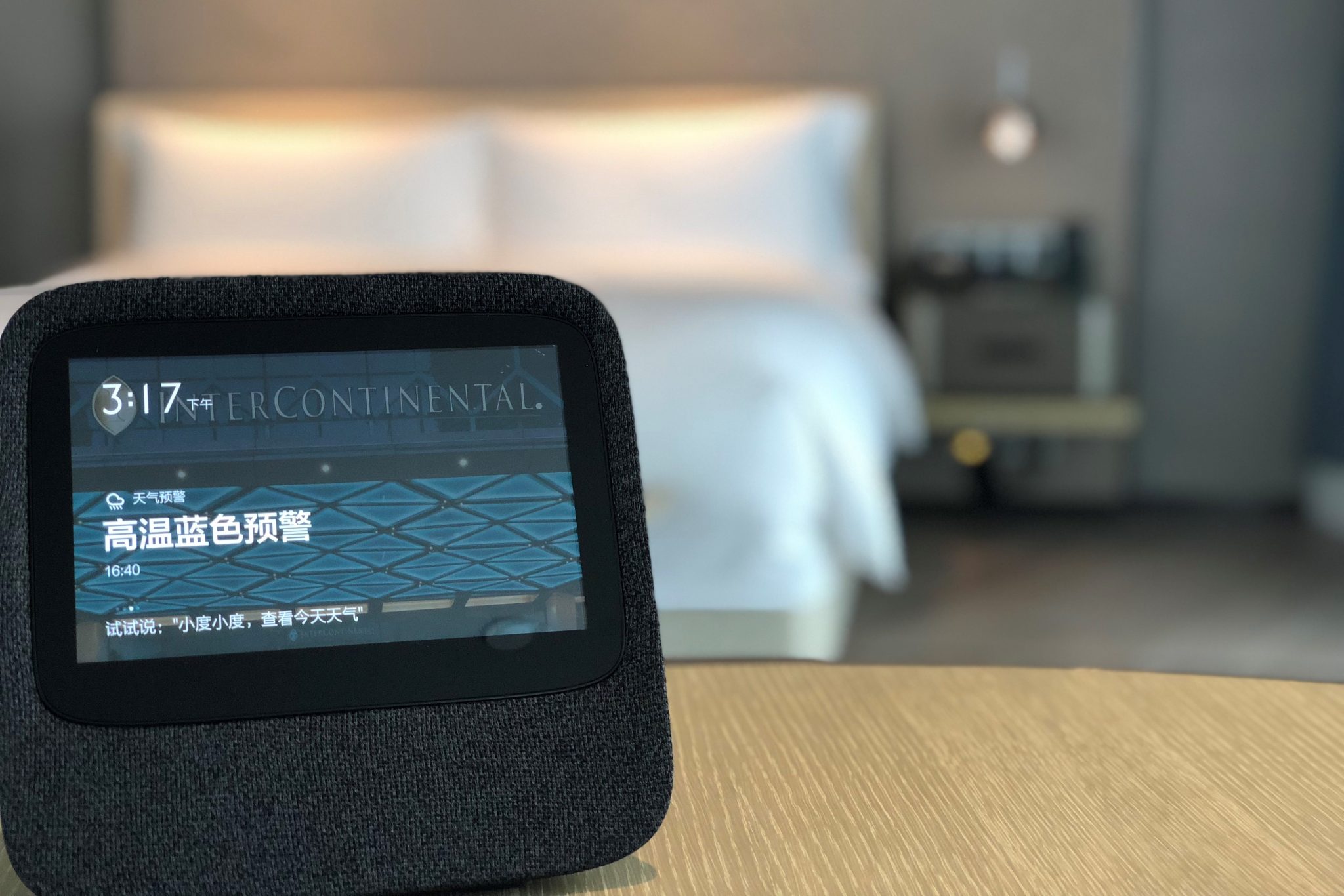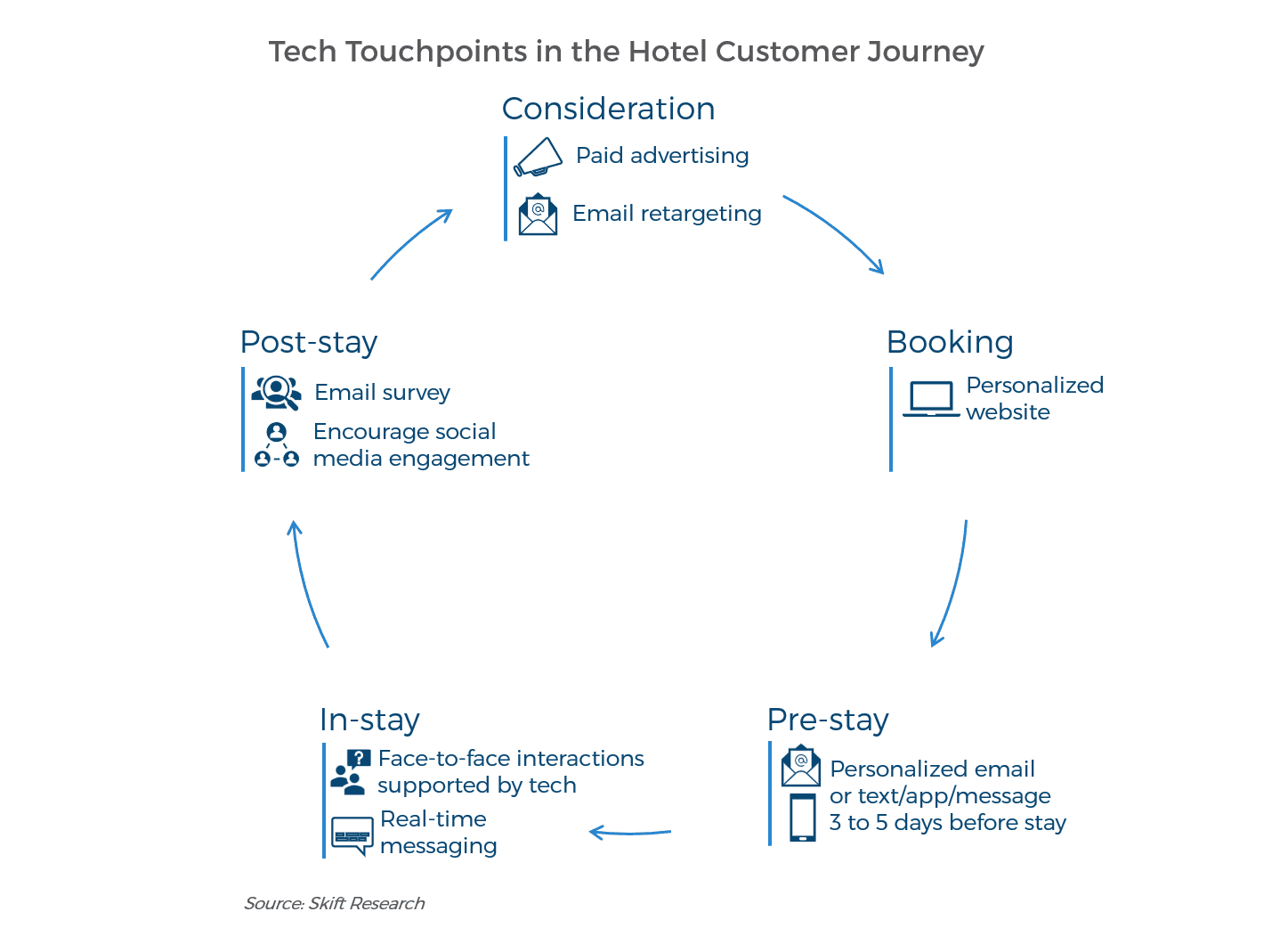Skift Take
Rather than being paralyzed by the threat of Amazon, let’s actually learn from its successes. Using tech to achieve a more customer-centric approach to brand loyalty is a great place to start.
Amazon’s entry back into the travel industry is a hotly debated topic in the industry. The outcome, however, seems inevitable. We’ve arrived at a stage where the common belief is that Amazon will make a big move into travel at some point, the question is just when it will happen.
Until that time, there are lessons to be learned from Amazon’s operations. The new Skift Research report An Expanded View of Hotel Loyalty Tech 2019 proposes a hotel flywheel framework mirroring Amazon’s Flywheel, to approach brand loyalty in a more customer-centric way.
This framework makes it clear that guest loyalty and loyalty tech solutions go far beyond loyalty program management systems. Let’s start looking at loyalty engines as just one tool in a suite of technology, including customer relationship management systems, booking engines capable of personalizing the booking experience, guest-facing messaging systems and voice assistants, and many more. All these tools can work in parallel to achieve a truly loyal guest.
Last week we launched the latest report in our Skift Research service, An Expanded View of Hotel Loyalty Tech 2019.
Below is an excerpt from our Skift Research Report. Get the full report here to stay ahead of this trend.
Preview and Buy the Full Report
THE HOTEL FLYWHEEL
“We need to move toward the experience where you put the guest in the middle, and the hotel communicates with the guest how the guest wants, rather than the other way around.” This may sound obvious, but for many hotels this is still a new concept, as Allan Nelson, co-founder and CEO of For-Sight explained.
Gone are the days where hotels send out general email blasts to their entire database in the hope of seeing results. It is about connecting with the customer at the right time, through the right medium and with the right information or offer. Not only should modern hoteliers not want to send out those email blasts, they do not need to anymore as technological capabilities and data collection are vastly improving.
“There is a huge convergence of loyalty, digital transformation, and customer experience initiatives, and as that happens the traditional boundaries of loyalty are blurring quite a bit. While the loyalty programs still exist, there are now a lot more places where we can go and impact the experience” said Guy Cierzan, managing partner at ICF Next.
We can look at Amazon here as a best-in-class example. The concept of the “Amazon flywheel” has impacted business thinking in many industries, and can be applied to the customer experience in the hotel industry. We explain more about the flywheel in our report Amazon: Lessons, Threats, and Opportunities for Travel, but the concept can be boiled down to having a business model that can build on its own positive momentum.
Rather than looking at the customer journey as a linear model with the guest booking at the start and hotel checkout at the end, the customer journey is a flywheel — a cyclical process with every stage providing the hotel with further information about the guest to enhance future experiences and drive retention.
Identifying potential customers can start early on in the consideration stage. Paid advertising can be targeted at customers based on past browsing behavior. If a potential customer has visited the brand.com website, the opportunities become infinitely greater, as visit behavior can be analyzed and used to tailor further outreach.
Good website design and a strong booking engine allow the brand.com website to be personalized based on the information available about the customer. If a website user has spent 30 minutes browsing the spa facilities page, hotels might want to offer a package that includes a spa treatment. A person searching for a place to stay for their family holiday might want to see more images and information about family amenities.
It is now pretty standard to receive an email three to five days before a stay with further information, and this is increasingly done through text messaging or in-app messages. This is a strong upsell opportunity if the hotel provides the right offer to the right person, which again depends on the amount of information available about the guest.
During the stay, text messaging, and in-room technology like tablets and voice assistants can greatly increase the real-time interaction between guests and hotel staff, improving service and providing an opportunity to right any wrongs.
Check-out is not, and should not be the end of a hotel’s interaction with its guests. Email or in-app surveys offer additional information about guests, and also provide an insight into those guests that are engaged and those who are not. Seeing who fills in a survey in itself is valuable information.
All the information collected from the guest by now, from the consideration, booking, in-stay, and post-stay stages should provide the hotel with a much clearer picture about the guest, which can feed back into retargeting emails and the brand.com website experience if the guest returns.
None of this flywheel approach to guest interaction is revolutionary. None of the tech is particularly advanced, but there are barriers to this approach.
The integration of different systems and tech, as well as data consent and privacy offer challenges. We will come back to these later. A more relevant and basic challenge for the flywheel approach is getting the amount and quality of data that is needed to personalize the offering. As already explained, hotels can extract insights from website visits or in-stay messages, but how often does the average guest really visit the hotel website?
Google and Amazon have nearly daily opportunities to capture data about its customers, while hotels need to do so with far fewer touch points.
Preview and Buy the Full Report
Subscribe now to Skift Research Reports
This is the latest in a series of research reports aimed at analyzing the fault lines of disruption in travel. These reports are intended for the busy travel industry decision maker. Tap into the opinions and insights of our seasoned network of staffers and contributors. Over 200 hours of desk research, data collection, and/or analysis goes into each report.
After you subscribe, you will gain access to our entire vault of reports, analyst sessions, and data sheets conducted on topics ranging from technology to marketing strategy to deep-dives on key travel brands. Reports are available online in a responsive design format, or you can also buy each report a la carte at a higher price.
Have a confidential tip for Skift? Get in touch
Tags: engagement, hospitality, hotels, loyalty, personalization, skift research
Photo credit: InterContinental has introduced Smart Rooms in hotels in Beijing and Guangzhou, allowing the room to be controlled through voice commands. IHG Plc

